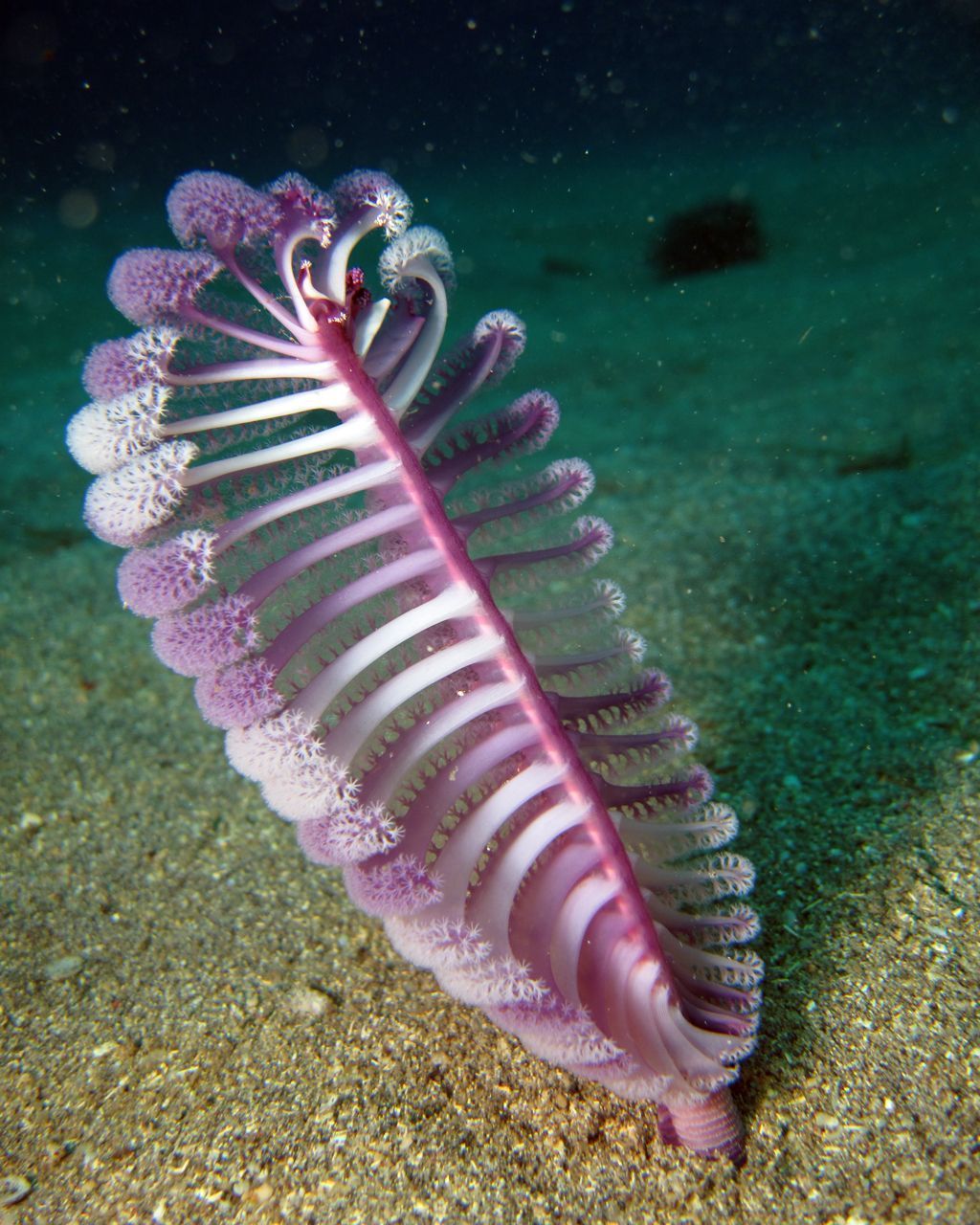This Sunday, October 4th is World Animal Day, and to celebrate our beautiful creatures, we've put together a list of 10 of the craziest animals you never knew existed! Some of these are seriously cool and seem like fictional animals from a fairytale, but turns out they're walking the earth or swimming in our oceans.
Before we begin, you might be thinking what is World Animal Day? World Animal Day is an international day of action for animal rights and welfare celebrated annually on October 4, the feast day of Francis of Assisi, the patron saint of animals. It leads into World Animal Week.


Image: F&F
Why Do We Celebrate World Animal Day?
The mission of World Animal Day is to raise the status of animals in order to improve welfare standards around the globe.
It's no secret that animals aren't treated equally in our world. They're farmed for meat, used to make things like leather, and other goods, their homes are destroyed in deforestation to make way for things like building, roads and even more farming land.
National Geographic reported in 2019 that the Earth is currently experiencing a biodiversity crisis. Recent estimates suggest that extinction threatens up to a million species of plants and animals, in large part because of human activities. Today, extinctions are occurring hundreds of times faster than they would naturally.


Image: Canva
Why Are Animals Important?
Animals all play a crucial role in our ecosystem and maintain an ecological balance between all animals in nature. Let's take Bees for example. Bees pollinate 80% of the world's plants which means lots of vegetables, fruit and crops that we eat on a daily bases. If bees went extinct, these plants would too, meaning lots of other species who rely on the plants as a food source would be in serious danger.
Animals are very important to biodiversity which you can read more about in our blog The Importance of Biodiversity Month.
Now let's get to the fun bit... here's 10 of the craziest animals you never knew existed!


Image: National Geographic
1. Ocean Sunfish
Other than being super adorable and somewhat human-looking, the ocean sunfish or common mola (Mola mola) is the world's largest bony fish. Weighing up to 5000 pounds, they can weigh more than a car.
They get their name from their love of sunbathing at the surface of the water to help warm up their body after deep dives. According to a Polynesian legend, it's bad luck to eat them (not that we would)!


Image: NBC News
2. Venezuelan Poodle Moth
We love this little moth not only for it's Furby or Pokémon appearance but for the mystery around it. As it was only discovered and photographed for the first time in 2009 by zoologist Dr. Arthur Anker. There is little information about this cute little critter, which allows your imagination to run wild. Where did it come from, what is its purpose? We hope to find out more in the near future...


Image: Canva
3. Sea Pen
The name is pretty self-explanatory as it looks like a quill which we once used to write with! The Sea Pen is a colonial, marine cnidarian, which means they are sessile animals that don't move a lot and are similar to Anemones (remember that word Nemo couldn't pronounce) and Coral.
You can find them in tropical and temperate waters worldwide. They aren't stuck to the ocean floor and will move where there's a better current to bring plankton, their favourite food right to them! Pretty smart, eh?


Image: Wikipedia
4. Markhor
The markhor, otherwise known as the Capra falconeri is a large, wild goat found in woodland in Central Asia, Karakoram and the Western Himalayas. Their most prominent feature is their spiral horns which the males use to fight off rivals during mating season.
Markhor is a herbivore so they mainly eat grass, shrubs and twigs. They are exceptional climbers and can escape predators quickly by climbing up steep cliffs. They are also the national animal of Pakistan!


Image: Smithsonian Ocean Portal
Goblin Shark
If you've ever seen Harry Potter, you'll notice the resemblance to the Goblins Gringotts bank! This deepwater shark has a particularly scary appearance that might give you nightmares, but they pose no threat to humans!
This shark lives in the Atlantic, Pacific & Indian Oceans, but is most commonly found off the coasts of Japan which is where it gets its common name tengu-zame. In Japanese folklore there is a demon named 'tengu' and 'zame' means shark in Japanese.
The most interesting thing about the goblin shark is its ability to thrust it's jaw forward like a slingshot to catch its prey. Make sure to look this up on YouTube as it's quite interesting!


Image: Canva
6. Sri Lanka Frogmouth
Despite its owl-looking appearance, the Sri Lanka frogmouth is actually a bird! The beautiful creatures are found in India and Sri Lanka in dense tropical forests. The females (left) are rufous or chestnut brown while the males are more grey-brown.
They lay a single egg which the male looks after during the day and at night the male and female take turns. Their call is described as a frog-like sound that goes Klock-klock-klock-klock-klock. There are some great videos on YouTube with their interesting call.


Image: Reddit
7. Panda Ant
This little furry insect gets its name because of its Panda-like markings. The Panda Ant is, is actually not an ant at all but a wasp! Who knew!? Different from regular ants, these ground-dwelling critters do not live in colonies!
The females do not have wings like the males and their sting is quite painful, so if you're in Chile, Mexico or Southwestern United States, stay clear!


Image: US/ EPA
8. Irrawaddy Dolphin
If you love dolphins, meet their adorable, more plump cousin, the Irraway Dolphin! This super cute ocean creature is found near sea coasts and in estuaries and rivers in parts of the Bay of Bengal and Southeast Asia. They're a euryhaline species of oceanic dolphin, which means they can transition between saltwater and freshwater.
Their difference between these and most dolphins is their round face and shorter dorsal fin. They aren't as social as most dolphins and travel in smaller pods of 3-6. They are believed to be about 7000 in the world and while they aren't officially endangered, they are said to have a decreasing population and the species is quite vulnerable.


Image: Instagram/ saiga_conservation
9. Saiga Antelope
Just look at that nose! The Saiga Antelope looks like a cross between a regular antelope and anteater! They can be found in Asia and southeastern parts of Europe and live in herds of around 30-40. Sadly, the population has decreased over the years due to uncontrolled hunting; the meat is eaten by locals and the horns are used in traditional Chinese medicine.
The Saiga Antelope has a beautiful cinnamon-coloured fur and a very interesting nose that covers its mouth. The purpose of their nose is to prevent dust from entering its lungs during the summer and warms the cold air before reaching the lungs during the winter.
As the males are the only ones with horns, due to hunting, there is. a disproportionate number of females.


Image: National Geographic
10. Maned Wolf
We can't decide if this forest creature is cute or terrifying! This long-legged, fox cross hyena looking, animal is the largest canine of South America. It's found in grasslands and scrub forest and can weigh 20-25kg and stands about 1 metre tall.
It's nicknamed a "fox on stilts" and known for it's “roar-bark" (checkout YouTube for a sound clip) and it's marijuana-smelling pee!
Find out more about World Animal Day and help keep celebrating our amazing fauna.
If you liked this blog, make sure to check out our other Eco News blogs here.
You might like some of these blogs:

